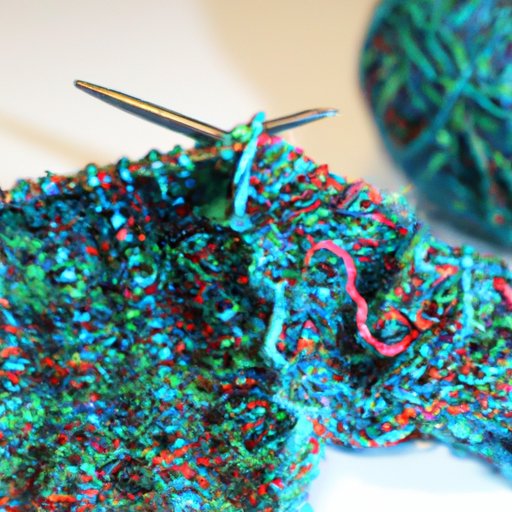
Introduction
Once you’ve knit all of the necessary rows of your project, it’s time to bind off. This is a simple technique that involves finishing the last row of stitches and closing them off to create a finished edge.
Binding off is important for ensuring that your knitting doesn’t unravel or become undone. It also gives your project a polished and professional look, making it suitable for wearing or gifting.
This guide will cover different binding off techniques for knitters, so you can experiment and find the perfect finish for your projects.
A Step-by-Step Guide for Binding Off in Knitting
The basic concept of binding off is to create a finished edge by closing off the last row of stitches without adding any more. Here’s how to do it:
- Knit the first two stitches on your last row.
- Insert the left-hand needle into the first stitch on the right-hand needle.
- Lift that stitch up and over the second stitch on the right-hand needle and off the needle.
- Knit the next stitch on the left-hand needle.
- Repeat steps 2-4 until you’ve worked through all stitches on the row.
- Cut the yarn, leaving a long tail.
- Thread the tail through the last loop and pull tight.
If you need a visual demonstration of the steps, check out online tutorials or videos for more guidance.
Popular Knitting Bind Off Techniques
While the basic binding off technique works well for most projects, there are different techniques that can add a unique touch to your knitting. Here are some common techniques:
- Standard Bind Off: This is the basic technique mentioned earlier. It’s best for projects like scarves and blankets.
- Elastic Bind Off: This technique is great for projects with a stretchy edge.
- I-cord Bind Off: This is a decorative bind off technique that creates a narrow tube-like edge.
- Picot Bind Off: This technique produces a scalloped edge and is often used for shawls and lacy projects.
You can experiment with different binding off techniques to add a personalized touch to your knitting projects.
Troubleshooting Binding Off Problems in Knitting
While binding off is relatively simple, some knitters may encounter issues while doing it. Here are some common problems and solutions:
- Casting off too tightly: This can be solved by using a larger sized needle or casting off with a looser tension.
- Uneven edges: Try using a different needle size or tension when binding off. Alternatively, try blocking your project to even out any inconsistencies.
- Forgetting to bind off: This is a common mistake for beginners. Be sure to follow the last row of your pattern carefully to avoid missing the binding off step.
Remember that practice makes perfect, so keep trying until you get the perfect bind off finish.
Creative Binding Off Techniques for Knitters
If you want to add a unique touch to your knitting projects, try experimenting with unconventional binding off techniques. Here are some ideas to get you started:
- Lace Bind Off: This technique uses yarn overs to create a lacy edge.
- 2-Color Bind Off: This technique uses two different colors of yarn to create a multicolored edge.
- Garter Stitch Bind Off: This technique uses garter stitch instead of knit stitches to create a unique edge.
Don’t be afraid to try out new techniques and see how they affect your projects.
Binding Off Special Projects in Knitting
Some projects require special binding off techniques to achieve the desired result. Here are some common cases:
- Socks: Socks require a stretchy and durable edge, so a standard bind off technique may not work. Try using an elastic or kitchener bind off.
- Hats: Hats also require a stretchy edge, so an elastic bind off is a good choice. You can also use a tubular bind off to create a polished finish.
- Lace projects: For lace projects, a picot bind off can add to the lacy effect.
Be sure to choose the right binding off technique for your specific project to achieve the desired result.
Conclusion
Binding off is an essential technique that every knitter needs to know. By following the step-by-step guide and experimenting with different techniques, you can achieve the perfect bind off finish for your projects. Don’t hesitate to troubleshoot any problems that arise and try out unconventional techniques for a unique touch.
Keep in mind that binding off isn’t a one-size-fits-all process. Be sure to choose the right technique for each project to achieve the best results.




